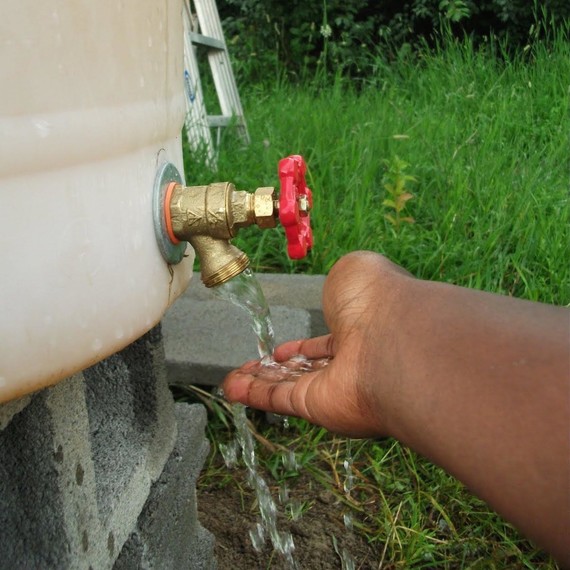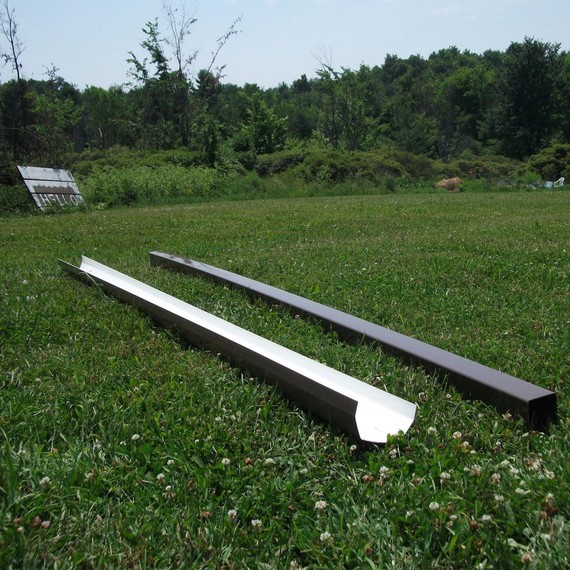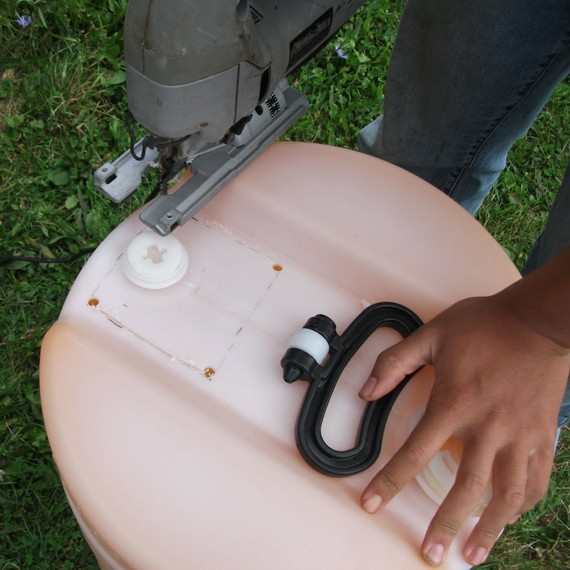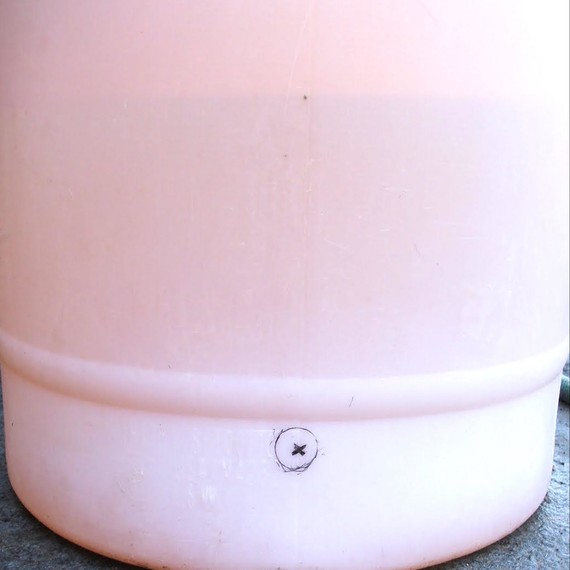

Rainwater harvesting is the ancient practice of catching and storing water that runs off hardscapes for later use. Rainwater captured in barrels, cisterns, and ponds can be used for everything from outdoor showers to irrigation. For those of us who are interested in landscape design or water conservation, rainwater catchment is definitely something to look into.
Designs for rainwater catchment range from extremely simple to highly complex. At its most basic, rainwater catchment is achieved with a gutter that runs along a roofline and attaches to a downspout that pours into a large plastic drum. A spigot at the bottom of the drum allows for a gravity-fed water line to be hooked to a hose for garden irrigation. In this simple tutorial, I’ll show you how to create a system on the side of your shed, garage, or greenhouse that will provide you with gallons of fresh water!

Materials
• gutter to run length of roofline
• downspout to connect from gutter to barrel
• two endcaps for gutter
• gutter-drop outlet that connects gutter to downspout
• brackets to hold up the gutter against house, shed, or garage
• galvanized screws
• barrel (50-gallon is most universal, but you can buy much larger or smaller or get used ones from local farmers; just be sure to thoroughly clean any hand-me-downs)
• base for barrel (a few cinderblocks, bricks, or weatherproof table — you want the spigot high enough to put a watering can or hose under)
• spigot for barrel
• two washers for spigot
• mosquito screen (metal screen or mesh with tiny openings) for opening at top of barrel to ensure no bugs, leaves or debris wind up in your water
• waterproof adhesive to attach mosquito screen to barrel
• drill with various bits: one to fit your screws, one with a drill head of the same diameter as your spigot
• jigsaw
• hacksaw

Directions
1. Mark a square on the top of your barrel, about 4×4 inches, where the downspout will enter the barrel. Drill inside the square to allow a starting point for your jigsaw. Use the jigsaw to trace the lines of the opening for the downspout.

2 Mark an X on the front of the barrel three inches from the bottom for the spigot. Drill into the X for your spigot.
3. Set your barrel up on a base sturdy enough that it will not collapse or rot.
4. Put a washer on your spigot and screw it into the hole in the barrel.
5. Measure your roof edge and cut your gutter length to fit (any saw will be able to cut through the plastic gutter). The gutter will be cut and attached to the roof, and the downspout will lead directly into the rainwater barrel.
6. Take your gutter braces and screw them along the roofline, ensuring a gradual angle so the water runs downstream to where your catchment barrel is waiting.
7. Put your gutter in the braces and attach downspout attachment piece to the lower end. Attach endcaps.
8. Measure from the gutter to the top of where your barrel sits and use the hack saw to cut your downspout to be just a few inches longer.
9. Attach the downspout to the downspout attachment piece of the gutter system, making sure the bottom of it is inside the top of the barrel.
10. Attach mosquito screen around top opening of barrel, working around the downspout’s entrance point. Secure with waterproof adhesive.
11. Hook a hose to the spigot. After the next rainfall, you’ll be ready to irrigate!
I hope this system makes watering your garden a cinch. Share your photos and other irrigation ideas in the comments section below!
Photography by Nicole Caldwell and Elizabeth Musoke of Better Farm.
Watch the video below for more gardening tips!
SOURCE:http://www.marthastewart.com/1119919/homemade-rainwater-catchment-system